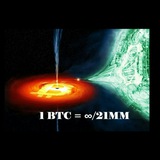SATOSHI ° NOSTR ° AI LLM ML RL ° LINUX ° MESH IoT ° BUSINESS ° OFFGRID ° LIFESTYLE | HODLER TUTORIAL
Wiley Science and Engineering Content Hub
Indoor propagation modeling using WIPL-D software – Part I
Register now free-of-charge to explore this white paper Learn why 2D EM modeling with WIPL-D software can be a game-changer for indoor propagation simulations. Reduce computational time while…
SATOSHI ° NOSTR ° AI LLM ML RL ° LINUX ° MESH IoT ° BUSINESS ° OFFGRID ° LIFESTYLE | HODLER TUTORIAL
How Computers “See” Molecules
#Article #Artificial_Intelligence #Biotechnology #Chemistry #Data_Science #Machine_Learning #Bioinfomatics #Computational_Biology #Graph #Representation
via Towards Data Science
#Article #Artificial_Intelligence #Biotechnology #Chemistry #Data_Science #Machine_Learning #Bioinfomatics #Computational_Biology #Graph #Representation
via Towards Data Science
Telegraph
How Computers “See” Molecules
Generative Molecular Design (Part 1): common molecular representations in data science. The post How Computers “See” Molecules appeared first on Towards Data Science. Generated by RSStT. The copyright belongs to the original author. Source
SATOSHI ° NOSTR ° AI LLM ML RL ° LINUX ° MESH IoT ° BUSINESS ° OFFGRID ° LIFESTYLE | HODLER TUTORIAL
#Bioinformatics #Biotechnology #Genome_sequencing #Dna #Computational_biology #Lepidoptery #Scale_issue
source
source
IEEE Spectrum
Mass-Scale Genome Sequencing Will Change Our Understanding of Life
The Earth BioGenome Project aims to sequence 1.8 million species. It's one of the most ambitious science projects ever, and it will revolutionize biology
